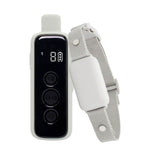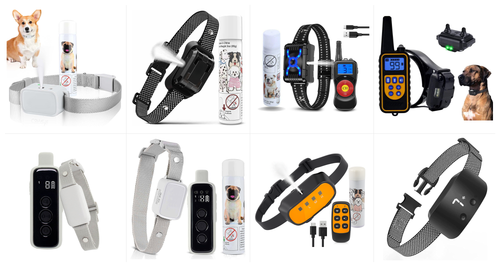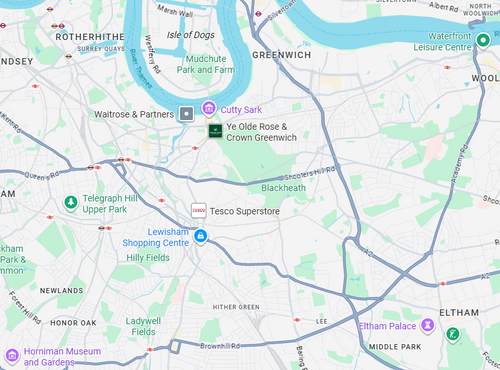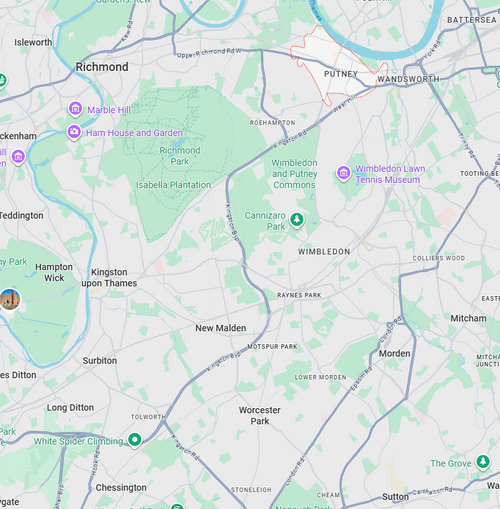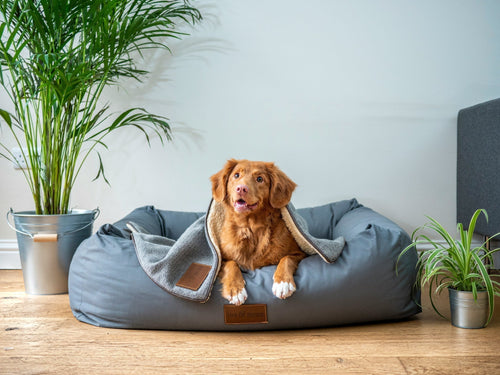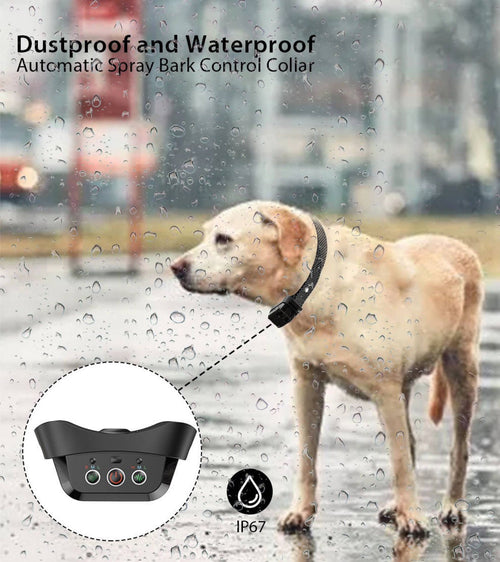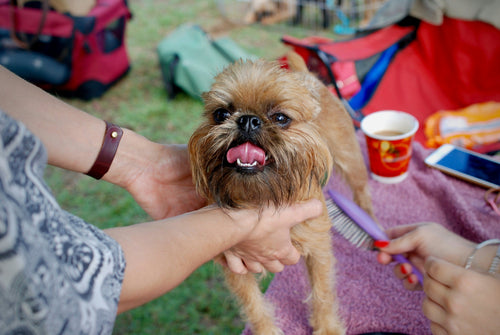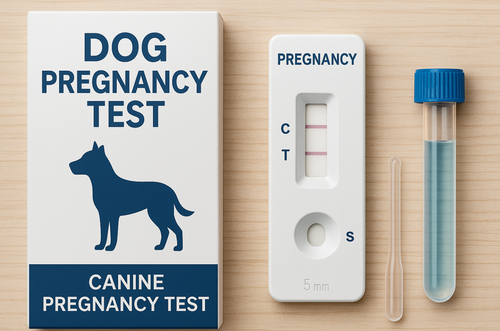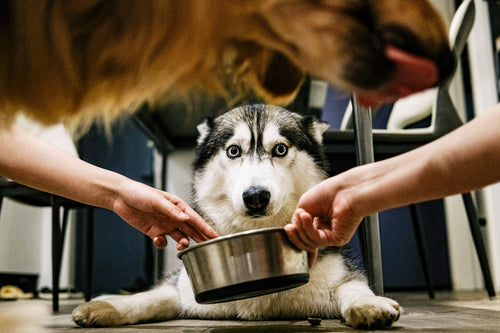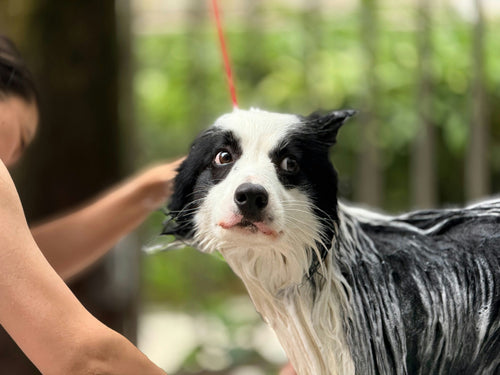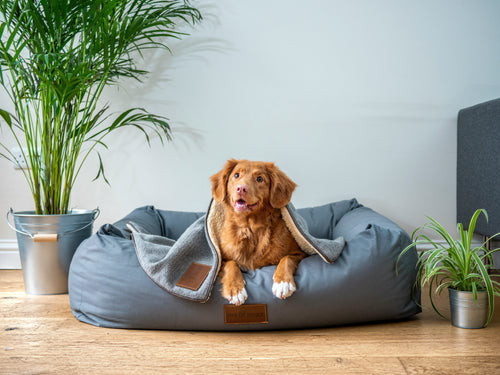All owners want their dogs to be happy, healthy and well-behaved, but the fact is, training dogs can be tough. Just like humans, dogs have unique personalities, fears and instinctual habits that can influence how they respond to different situations, often leading to unwanted behaviours like excessive barking.
Some owners turn to shock collars, prong collars and similar aversive training aids to combat nuisance barking, pulling and aggressive behaviour, but these types of products usually do more harm than good.
To learn why vets and professional dog trainers advise against the use of shock collars, and to identify some ethical alternatives to help train your dog safely, this guide covers the ins and outs of humane dog training and offers a vet-approved list of no-harm techniques to help promote desired behaviours.
Why to avoid shock, choke and prong collars

Before we cover any safe alternatives, it's important to explain why shock collars and other similar dog training aids should be avoided. Shock collars attempt to stop barking and pulling through punishment, by delivering painful electric shocks to your furry friend every time they exhibit an unwanted behaviour.
On top of the potential harm these types of products can cause to your pup, research suggests they're no more effective than reward-based training. In addition, painful training techniques can create more issues than they solve, influencing feelings of anxiety, stress and fear which just breed more aggression.
In short, painful training aids like electric shock, choke and prong collars hurt dogs' well-being through:
-
Physical pain: Whether through electric shocks or sharp metal prongs poking at your dog's neck, punishment-based pet training aids can cause long-lasting injuries like skin lesions, burns and cuts.
-
Mental distress: While dogs are clever animals, they don't really understand why behaviours like pulling and barking are bad, leaving them fearful that they'll be hurt for simply expressing emotion.
-
Poor results: There's no solid evidence that shock, choke or prong collars are any more effective than humane dog training techniques, so it's not even likely that using them will solve your issues.
Taking all of the above into account, electric shock collars have been banned across several countries, including England, Wales, Germany, Denmark and parts of Australia. As well as being beneficial to dog well-being, these bans have drawn more attention to the many safe alternatives available to pet owners.
5 humane alternatives to electric shock collars for dogs

Whether you're looking to stop barking and pulling behaviours, or find a way to keep your dog focused on your instructions in overstimulating environments, there are plenty of safe and effective dog training options out there. Below, we cover 5 safe alternatives to electric shock collars you and your pup can try.
1. Positive reinforcement training
Positive reinforcement training is one of the most effective ways to teach your pet good habits, with the added benefit that it can be used alongside other humane dog training aids, methods and techniques.
The idea behind positive reinforcement training is that by rewarding desired behaviours with things your furry friend enjoys, they'll naturally avoid bad habits like barking and pulling. Essentially, this technique trains your pet to seek out good behaviours in order to get things they like such as food, play and praise.
For example, begin responding to barks with a distinct command like "quiet", then reward your dog with a treat immediately following an extended period of silence. Over time, your pup will learn that the quiet period is always followed by a treat, causing them to associate positive behaviour with desired rewards.
2. Vibrating dog training collars
While positive reinforcement is the foundation of an ethical dog training routine, most owners will know that sometimes, quickly diverting your dog's focus is necessary to keep them safe. In these instances, aversive aids can be effective, provided you use products that don't cause any physical or mental harm.
Vibrating dog training collars offer a safe and effective alternative to harmful shock, choke and prong collars. These types of training aids work by drawing your dog's focus away from overstimulating sights and sounds using a gentle yet distinct vibration to give you a window to speak authoritative commands.
Sometimes known as e-collars, vibrating collars come in a few forms. Remote-controlled e-collars can be activated as and when needed from a handheld remote, while automated bark control collars can be configured to respond to your pup's voice, providing multiple options to safely grab your dog's attention.
3. Citronella spray collars for dogs
Citronella spray collars are another safe and humane alternative to electric shock collars. They work in a similar way to vibrating collars, though instead of a gentle vibration, they use a light spray of dog-safe citronella extract to help teach your furry friend to avoid unwanted behaviours like barking and pulling.
If your pup is easily distracted by other dogs, or often running off in search of interesting scents, these types of no-harm training aids offer a reliable way to conduct obedience training. Citronella is a distinct but short-lasting scent that dogs would rather avoid, so linking it to bad habits acts as a great deterrent.
Like vibrating bark collars, spray collars can be automatic or remote-controlled, providing multiple ways to address bad habits without causing physical or mental distress. Trainers can use vibrating and spray collars alongside positive reinforcement training to both tackle bad habits and reward desired behaviour.
4. Structured clicker training

In most cases, a combination of positive reinforcement training and dog-safe anti-bark collars provides a comprehensive approach to humane dog training. Spray or e-collars help teach your loyal companion to avoid unwanted behaviours, while positive reinforcement trains them to actively seek out good habits.
However, positive reinforcement training can be tricky to perform outdoors in spaces that are filled with distracting sights, sounds and smells. To overcome this challenge, many trainers advise clicker training, a technique that sees pet owners mark desired behaviours with an audible click to make training clearer.
When your dog performs a desired behaviour like remaining calm around other dogs, you can mark that action using a dog training clicker then immediately reward them with a treat. Over time, they'll learn to associate the clicker with a reward, giving you a way to safely control your dog while out in busy spaces.
5. Mental and physical enrichment
Alongside the above-mentioned training aids and techniques, efforts to keep your dog both mentally and physically stimulated can prove effective in tackling unruly behaviour. The idea here is that a bored pup is more likely to act out in order to let out excess energy, so you want to keep them happy and busy.
When training dogs, routine physical exercise is a must, so make sure to take them on daily walks where they can run, sniff and play. What constitutes a healthy amount of exercise varies by breed and age, but as a general rule, small pups need two 15-20 minute walks while big dogs need three 30 minute outings.
In addition to walks and physical exercise sessions, games that make your dog think are important for their well-being. Try to set some time aside each day for your pup to play with enrichment toys such as food puzzles and snuffle mats, and make sure to give some praise and affection when they solve them.
Top tips for a successful dog training routine
Successfully training dogs to avoid unwanted behaviours and prioritise good habits requires both the right tools and a bit of dedication. We've covered the best safe alternatives to harmful tools like shock collars, but these training aids and techniques work best when they become part of your dog's routine.
With all this in mind, below are some top tips for building a successful and engaging dog training routine.
Focus on positive reinforcement
Positive reinforcement should be the backbone of your dog's training routine, with this technique used to support all other strategies and exercises. From your front door to the dog park, the goal must be to teach your dog that good behaviour brings rewards, rather than that bad habits will lead to punishment.
Use tools like clickers to teach patience when crossing roads and interacting with other dogs, and make sure to provide regular treats when your pup uses their leash properly and behaves well around humans and other animals. The key is to incentivise good behaviour to such an extent that bad habits disappear.
Be consistent with your commands
While dogs are very intelligent animals, they don't quite understand human language the way we do, so it's important to be mindful of the commands you use to request desired behaviours. Short, sharp and consistent commands work best, so try choosing obvious, easy-to-express words like "quiet" and "stay".
Help your dog learn to associate these commands with desired behaviours by practicing at home or in a quiet and controlled environment. By practicing anti-bark and no-pulling training in spaces where your dog feels safe, you can help avoid fear or anxiety influencing their actions and impacting your training.
Offer your dog varying forms of exercise
Consistency is, of course, key to successful dog training, but that doesn't necessarily mean walking and playing with your pup at the same time and in the same way every single day. Just like humans, dogs enjoy a little variation in the way their days unfold, so have a quick look for ways to mix up your routines.
This could be as simple as taking walks at different times of the day to let your dog see their favourite spots in a new light, or as involved as taking them on trips to new parks and forests filled with exciting sights and sounds, with the protection of a vibrating or spray collar to help address any overstimulation.
Remember to be assertive when required
No loving dog owner wants to shout at their pet, but sometimes assertive actions are required to keep them safe. Harmful products like shock collars are so well known because sometimes a strong reaction works well to draw pets away from danger, it's just vital to use a method that doesn't cause more pain.
Through a combination of dog-safe anti-bark collars and assertive commands, it's possible to redirect a dog's focus away from danger and back to safety without causing anxiety, fear or physical pain. As with most other aspects of good dog training, it's all about consistency and balancing aversion with rewards.
Provide your dog a healthy, nutritious diet
Finally, it's important to support all your training and exercise efforts by making sure your dog's diet is healthy, nutritious and filled with all the vitamins and minerals they need to stay in good shape at any age. For most dogs, this means good portions of high quality protein, fresh vegetables and whole grains.
As part of a healthy diet, it's also wise to explore vet-approved dog vitamins and supplements designed to address and prevent common health issues. Examples include dog probiotics to promote gut health and digestion, as well as supplements to treat and mitigate common issues like joint pain in older pups.
Wrapping up
Pet ownership of all kinds requires a lot of time and dedication, but unlike independent animals such as cats, dogs often need a little extra attention when it comes to addressing bad behaviour. Some people think pain is an effective deterrent, but the truth is, studies show no-harm methods are just as effective. If you are considering to get a new, little, fluffy family member, compare the puppy prices in the UK and read more about dog training.
Shock collars, prong collars and other similar aversive training aids can cause long-lasting injuries and psychological issues, which is why they're now banned in many countries. Thankfully, there are several safe alternatives to these products that enable loving dog owners to perform humane aversive training.
Alongside the use of dog-safe vibrating e-collars and spray collars, things like positive reinforcement, regular mental enrichment and a good diet can help dogs avoid bad habits and be well-behaved around other animals. With some patience and understanding, you can help your pup live their life to the fullest.




